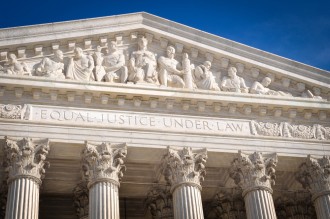June 2, 2011
Global-Tech Appliances, Inc. v. SEB SA – The Supreme Court Addresses Inducement of Patent Infringement
In Global-Tech Appliances, Inc. v. SEB SA, the Supreme Court held that inducement of infringement under 35 USC 271(B) requires knowledge that the induced acts constitute patent infringement. This means that the alleged inducer must know (1) that the patent exists and (2) that the induced acts constitute infringement of that patent.
The Supreme Court’s knowledge requirement is more stringent than the deliberate indifference to a known risk that a patent exists standard applied by the Federal Circuit below. However the Supreme Court reached the exact same result, finding sufficient evidence in the record that the defendants had the requisite knowledge by applying the doctrine of “willful blindness” which the Supreme said it borrowed from criminal law. Under the willful blindness doctrine, a person who deliberately shields himself from clear evidence of critical facts that are strongly suggested by the circumstances is nonetheless charged with knowledge of the facts he or she purposely avoided.
In order to find knowledge under the willful blindness doctrine, the defendant must (1) subjectively believe that there is a high probability that a fact exists, and (2) take deliberate action to avoid learning of that fact. The Supreme Court found that these requirements gave willful blindness an appropriately limited scope distinguishing both the reckless defendant – one who acts with knowledge of a substantial and unjustified risk, and the negligent defendant – one who should have known of the risk but did not.
The Supreme Court found willful blindness in the case before it based primarily on:
Defendants’ belief that the copied SEB product embodied advanced technology
Defendants’ copying of a foreign, rather than U.S. model, which defendants were “well aware” would not usually bear U.S. patent markings
Defendants’ failing to disclose to the counsel providing a clearance opinion that the product was a copy of an SEB design
The Supreme Court could fathom no other motive for the failure to disclose the copying of the SEB product other than to manufacture a claim of plausible deniability. The Supreme Court concluded that defendants subjectively believed there was a high probability that the fryer was patented, and took deliberate steps to avoid knowing that fact, and therefore their actions induced infringement.
WHAT DOES THIS MEAN FOR PATENTEES?
It is harder to prove inducement. The inducer must know about the patent, and know that the induced acts constitute infringement. The patentee will want to make sure that potential inducers know about the patent, for example through marking, advertising, and even direct notices (if it doesn’t provoke a declaratory judgment action). The patentee will also want to make it difficult for potential inducers to conclude the patent is invalid or not infringed. The patentee may want to pursue reexamination to clear prior art, and as always seek crisp claim language that is difficult to get around.
WHAT DOES THIS MEAN FOR ACCUSED INDUCERS?
It is harder to prove inducement. As long as the accused inducer was not willfully blind to the existence of a patent problem, having a good faith belief (preferably backed by a competent legal opinion) that the induced actions do not infringe, or that the patent is not valid, is a complete defense to liability for inducement (but not to any direct infringement). The accused inducer must be open and honest with counsel – the appearance of hiding something from counsel is what ultimately resulted in liability in Global-Tech, and made the clearance opinion worthless. An accused inducer should still take into account potential liability to its customers under warranties of non-infringement.



































